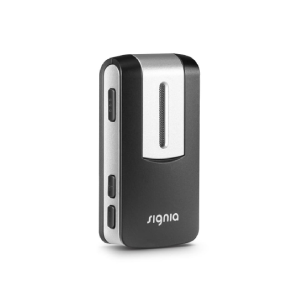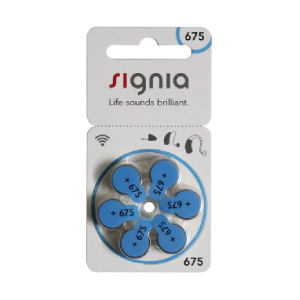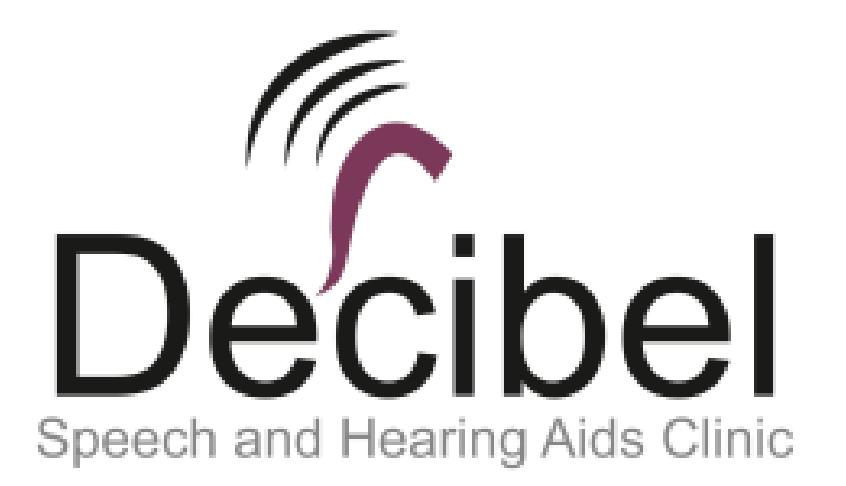Our Products

In Ear Hearing Aids
If you’re experiencing hearing loss, our in-ear hearing aids could be the solution you’ve been searching for.
These delicate devices are made to fit comfortably inside your ear canal to offer clear and amplified sound. These tiny hearing aids help you communicate confidently with the world around you.
We offer a range of in-ear hearing aids to suit your individual needs:
- Completely-in-Canal (CIC) hearing aids:-
These are smaller hearing devices that fit inside your ear canal with only the face of the device showing. It is suitable for people seeking separate hearing aid. - Invisible-in-Canal (IIC) hearing aids:-These are the smallest hearing aids and are custom-fitted to sit deep within the ear canal. IIC hearing devices are ideal for mild to moderate hearing loss.
- In-the-canal (ITC) hearing aids:- These are slightly larger than the IIC hearing devices but still fit in the ear canal partially. Just like the above devices, this one is also suitable for mild to moderate hearing loss.
- Receiver-in-Canal (RIC) or Receiver-in-Ear (RIE) hearing aids:- Both of these are similar in design and performance. However, these devices feature a small casing that is placed behind the ear.
- Custom-fit design to fit snugly and comfortably in the ear canal.
- Small and invisible, enhancing wearer confidence.
- Directly delivers sound for a lifelike listening experience.
- Advanced technology includes noise reduction and feedback cancellation features.
- Customizable settings allows users to adjust volume and program settings.
- Improved comfort: Ensures comfortable and secure wear throughout the day.
- Enhanced discretion: Provides confidence with its nearly invisible design.
- Natural sound quality: Delivers clear, natural sound for better speech understanding.
- Personalized experience: Tailors to individual hearing needs and preferences.
- Versatility: Suitable for various degrees of hearing loss and can be worn in one or both ears.
We offer a range of in-ear hearing aids to suit your individual needs:
- Completely-in-Canal (CIC) hearing aids:- These are smaller hearing devices that fit inside your ear canal with only the face of the device showing. It is suitable for people seeking separate hearing aid.
- Invisible-in-Canal (IIC) hearing aids:-These are the smallest hearing aids and are custom-fitted to sit deep within the ear canal. IIC hearing devices are ideal for mild to moderate hearing loss.
- In-the-canal (ITC) hearing aids:- These are slightly larger than the IIC hearing devices but still fit in the ear canal partially. Just like the above devices, this one is also suitable for mild to moderate hearing loss.
- Receiver-in-Canal (RIC) or Receiver-in-Ear (RIE) hearing aids:- Both of these are similar in design and performance. However, these devices feature a small casing that is placed behind the ear.
- Custom-fit design to fit snugly and comfortably in the ear canal.
- Small and invisible, enhancing wearer confidence.
- Directly delivers sound for a lifelike listening experience.
- Advanced technology includes noise reduction and feedback cancellation features.
- Customizable settings allows users to adjust volume and program settings.
- Improved comfort: Ensures comfortable and secure wear throughout the day.
- Enhanced discretion: Provides confidence with its nearly invisible design.
- Natural sound quality: Delivers clear, natural sound for better speech understanding.
- Personalized experience: Tailors to individual hearing needs and preferences.
- Versatility: Suitable for various degrees of hearing loss and can be worn in one or both ears.
Related Product


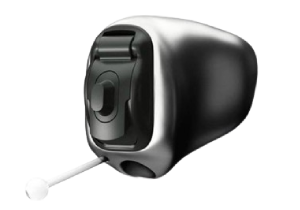
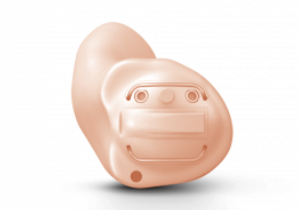
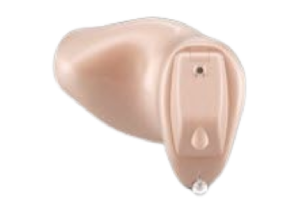
How Do In-The-Ear Hearing Aids Work?
In-the-ear (ITE) hearing aids are a type of hearing aid that fit entirely within the outer ear. They are custom-made to fit the unique shape of each user’s ear canal, providing a comfortable and discreet hearing solution. Here’s how these ITE works:
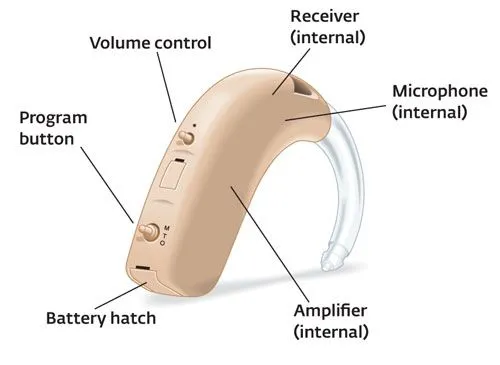
Components and Functionality
Microphone:
Role: Captures sound from the environment.
Process: Converts sound waves into electrical signals.
Amplifier:
Role: Increases the strength of the electrical signals received from the microphone.
Process: The amplified signals are adjusted based on your specific hearing loss profile, which is programmed into the hearing aid.
Receiver (Speaker):
Role: Converts the amplified electrical signals back into sound waves.
Process: The sound waves are then directed into the ear canal and onward to the eardrum.
Battery:
Role: Powers the hearing aid.
Process: ITE hearing aids use small batteries, typically zinc-air cells, that are either disposable or rechargeable.
Shell:
Role: Houses all the internal components.
Process: Custom-made to fit the user’s ear, ensuring comfort and optimal performance.
Types of ITE Hearing Aids:
Full Shell:
Occupies most of the outer ear.
Suitable for moderate to severe hearing loss.
Half Shell:
Fills the lower part of the outer ear.
Suitable for mild to moderate hearing loss.
Additional Features:
Telecoil (T-coil):
Allows the hearing aid to pick up sound directly from compatible phones and loop systems in public places.
Directional Microphones:
Enhance hearing in noisy environments by focusing on sounds coming from a specific direction.
Feedback Cancellation:
Reduces or eliminates whistling sounds that can occur with hearing aids.
Noise Reduction:
Filters out background noise to improve speech clarity.
How It Works Together:
Sound Input:
The microphone picks up sound waves from the environment.
Signal Processing:
sound waves are converted into electrical signals and processed by the hearing aid’s digital chip.
The processor amplifies the signals according to the user’s hearing loss profile.
Sound Output:
The processed electrical signals are converted back into sound waves by the receiver.
The amplified sound waves are delivered directly into the ear canal, allowing the user to hear more clearly.
By amplifying sound and customizing it to your hearing loss, ITE hearing aids help improve communication and overall hearing experience.
How to Use Your In-Ear Hearing Aid
- Carefully place the device in your ear canal.
- Ensure it fits snugly and comfortably.
- Adjust settings as needed using the controls or accompanying app.
- Remove the hearing aid when not in use to preserve battery life.
How to Clean Your In-Ear Hearing Aid
Proper maintenance is key to keeping your in-ear hearing aid in top condition and here’s how you can do it:
- Use a soft, dry cloth to wipe the exterior of the hearing aid daily.
- Use a hearing aid brush to remove wax and debris from the microphone and receiver ports.
- Do not use water or cleaning agents because they may harm the device.
- When not in use, keep the hearing aid somewhere dry and cool.
How to find the right ITE hearing aid for you?
Finding the right In-the-Ear (ITE) hearing aid involves several steps to ensure it matches your hearing needs, lifestyle, and personal preferences. Here’s a detailed guide to help you choose the best ITE hearing aid:
1. Consult an Audiologist:
Hearing Test:
Get a comprehensive hearing evaluation to determine the degree and type of your hearing loss here at Decibel Clinic. Our audiologists use various hearing tests to measure hearing sensitivity and identify specific frequencies that are problematic.
Medical Examination:
Ensure there are no medical conditions that need to be addressed before getting a hearing aid.
2. Determine Your Hearing Needs:
Hearing Loss Severity:
ITE hearing aids are suitable for mild to severe hearing loss. Discuss with our audiologist whether an ITE model is appropriate for your specific level of hearing loss.
Lifestyle Considerations:
Think about your daily activities and environments. If you spend a lot of time in noisy environments, features like directional microphones and noise reduction might be important.
3. Consider Technology and Features:
Sound Quality:
Look for hearing aids with advanced signal processing capabilities for clearer sound.
Connectivity:
Many ITE hearing aids offer Bluetooth connectivity for streaming audio from smartphones, TVs, and other devices.
Adjustability:
Some models allow for manual adjustments or come with smartphone apps for easy control of settings.
Battery Type:
Decide between disposable batteries and rechargeable options based on convenience and preference.
4. Comfort and Fit:
Customization:
ITE hearing aids are custom-molded to fit your ear. Ensure the audiologist takes precise measurements and impressions of your ear for a comfortable and secure fit.
Trial Period:
Most hearing aid providers offer a trial period. Use this time to test the comfort and performance of the hearing aid in various environments.
5. Budget and Insurance:
Cost:
Hearing aids can vary widely in price. Higher-end models with advanced features will cost more. Determine your budget and explore financing options if needed.
Insurance:
Check if your health insurance covers hearing aids. Some plans may cover part or all of the cost.
6. Manufacturer and Model:
Research Brands:
Look for reputable brands known for quality and customer service. Popular brands include Phonak, Oticon, Starkey, Widex, and Signia.
Read Reviews:
Check user reviews and testimonials for the models you’re considering to learn about other users’ experiences.
7. Aftercare and Support:
Follow-up Appointments:
Regular follow-ups with your audiologist ensure that the hearing aid is properly adjusted and functioning well.
Maintenance and Repairs:
Ensure the hearing aid provider offers good support for maintenance and repairs.
8. Trial and Adaptation:
Adjusting to Hearing Aids:
It may take some time to get used to wearing hearing aids. Be patient and communicate with your audiologist if you experience any issues.
Finding the right ITE hearing aid involves a combination of professional evaluation, understanding your personal needs, choosing the right technology and features, ensuring a comfortable fit, and considering budget and aftercare support. Working closely with a qualified audiologist is key to ensuring you make an informed decision and achieve the best possible hearing improvement.
Why Choose Us For In-Ear Hearing Aids?
So why choose us? Because we believe in simplicity, personalized care, and educating you to take control of your hearing health. Here at Decibel Speech and Hearing Aid clinic, you’ll not only receive a hearing aid but also gain a thorough understanding of your hearing loss. Other than hearing aids, we also provide speech therapy, hearing aid repair services, and hearing tests.
Types
- Completely-in-Canal (CIC)
- Invisible-in-Canal (IIC)
- In-the-canal (ITC)
- Receiver-in-Canal (RIC)
- Receiver-in-Ear (RIE)
Accessories and Tools

